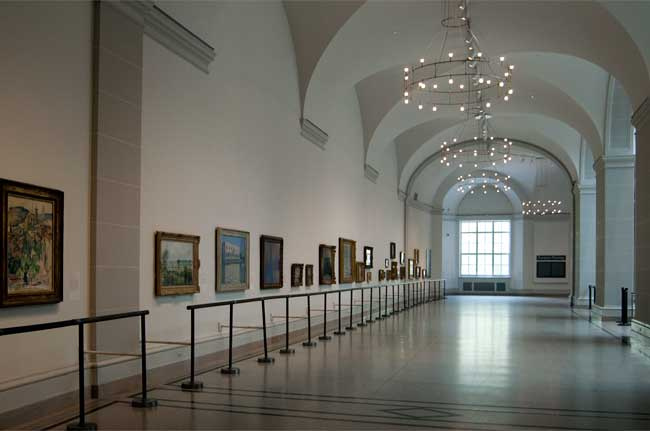The Brooklyn Museum is one of the oldest and largest art museums in the United States. Its roots extend back to 1823 and the founding of the Brooklyn Apprentices’ Library to educate young tradesmen (Walt Whitman would later become one of its librarians). First established in Brooklyn Heights, the Library moved into rooms in the Brooklyn Lyceum building on Washington Street in 1841. Two years later, the Lyceum and the Library combined to form the Brooklyn Institute, offering important early exhibitions of painting and sculpture in addition to
lectures on subjects as diverse as geology and abolitionism. The Institute announced plans to establish a permanent gallery of fine arts in 1846.
By 1890, Institute leaders had determined to build a grand new structure devoted jointly to the fine arts and the natural sciences; the reorganized Institute was then renamed the Brooklyn Institute of Arts and Sciences, the forebear of the Brooklyn Museum. The original design of the new museum building, from 1893, by the architects McKim, Mead & White was meant to house myriad educational and research activities in addition to the growing collections. The ambitious building plan, had it been fully realized, would have produced the largest single museum structure in the world. Indeed, so broad was the institution’s overall mandate that the Brooklyn Academy of Music, the Brooklyn Botanic Garden, and the Brooklyn Children’s Museum would remain divisions of the Brooklyn Institute of Arts and Sciences until they became independent entities in the 1970s.
Source: brooklynmuseum.org






